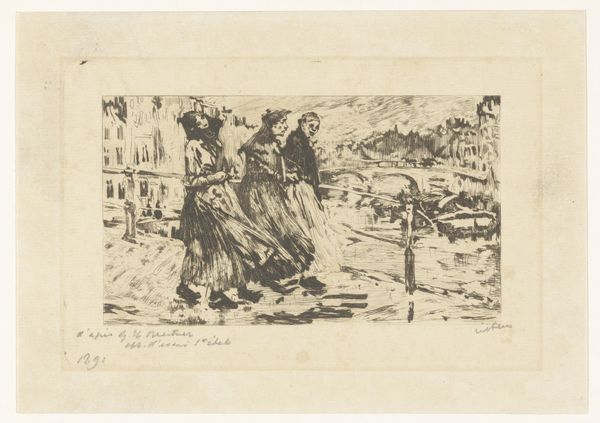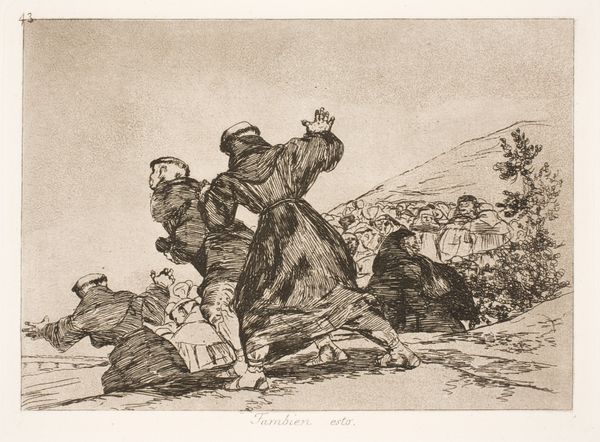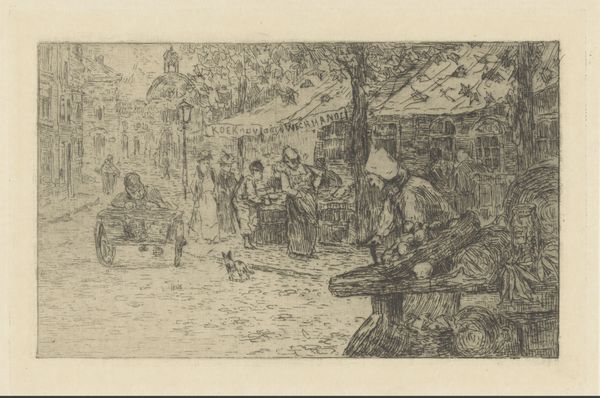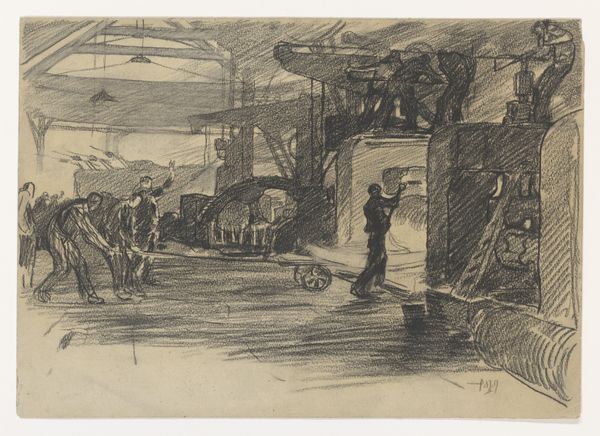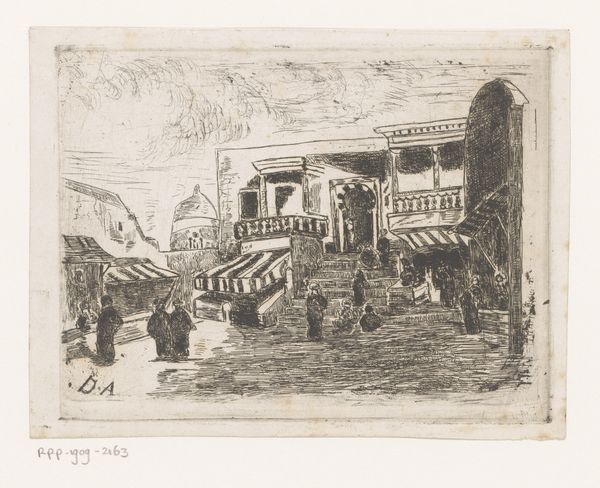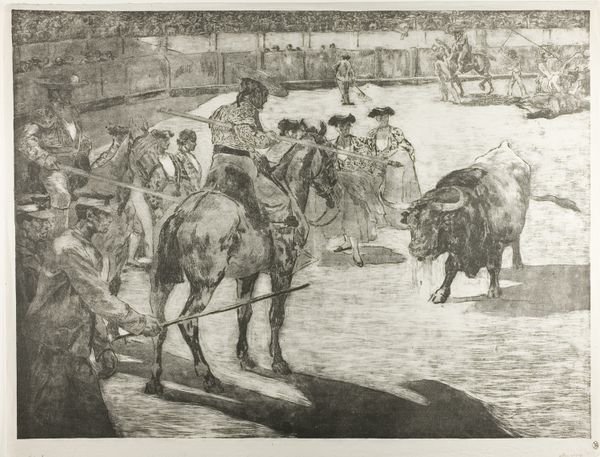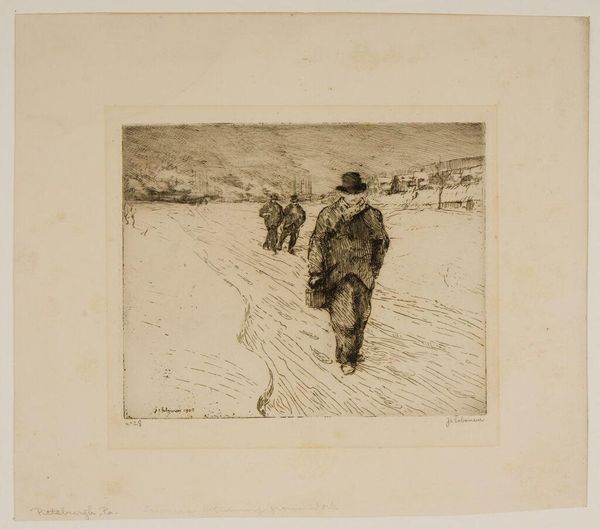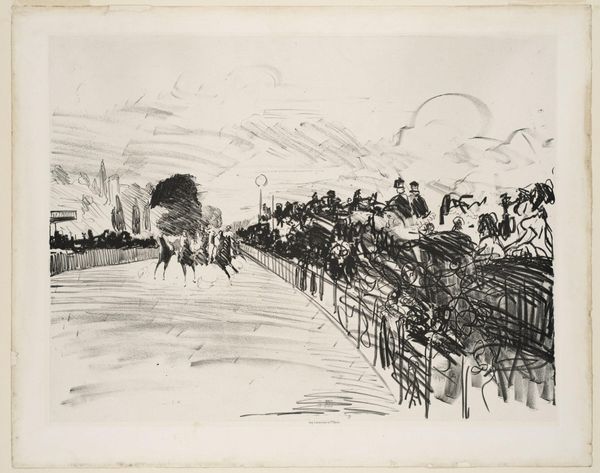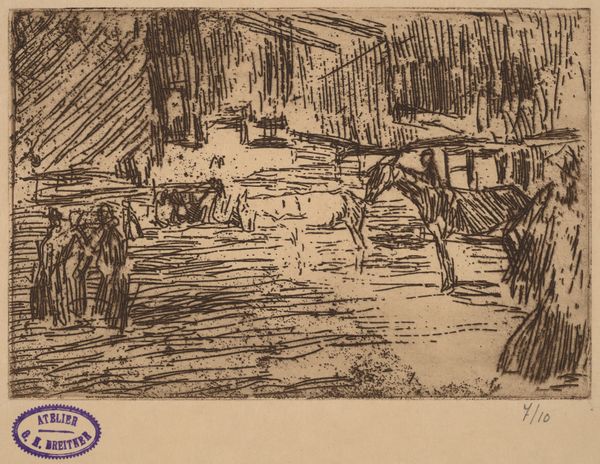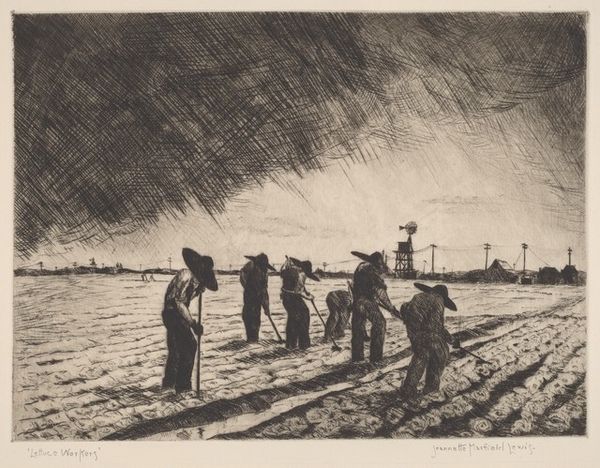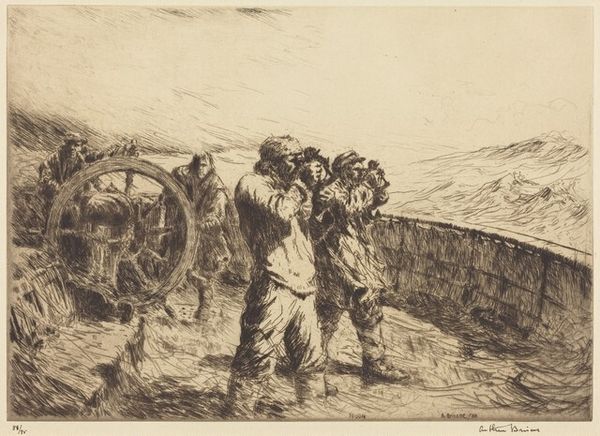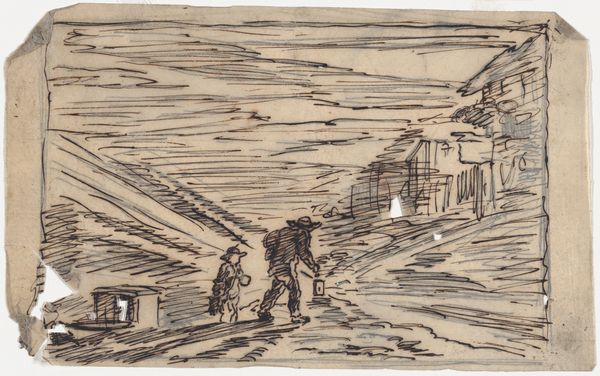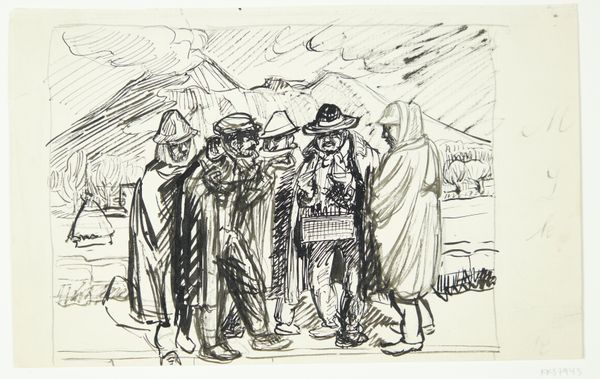
Dimensions: 130 × 121 mm (image/plate); 156 × 213 mm (sheet)
Copyright: Public Domain
Auguste-Louis Lepère made this etching, A Monday, Entry into Prés-Saint-Gervais, sometime around the turn of the 20th century. It captures a scene from daily life in the outskirts of Paris. Consider the title; the artist specifies this is a Monday, in other words, the start of the working week. But what kind of work is being done here? Look at the figures on the left drinking at an outdoor table, versus the more bourgeois figures arriving in the horse-drawn carriage. We sense two different worlds and social classes on the cusp of colliding. Lepère made many prints depicting the changing urban landscape of Paris, but he was also deeply involved in the artistic politics of his day as president of the Société des Peintres-Graveurs Français. The group sought to elevate the status of printmaking as a fine art, exhibited widely, and revived older printmaking techniques, like the one seen here. The social history of art helps us understand the artist's motivations and the complex worlds in which they lived. By researching the artistic institutions and the urban development of Paris at this time, we can see the cultural tensions that Lepère sought to capture in his work.
Comments
No comments
Be the first to comment and join the conversation on the ultimate creative platform.
